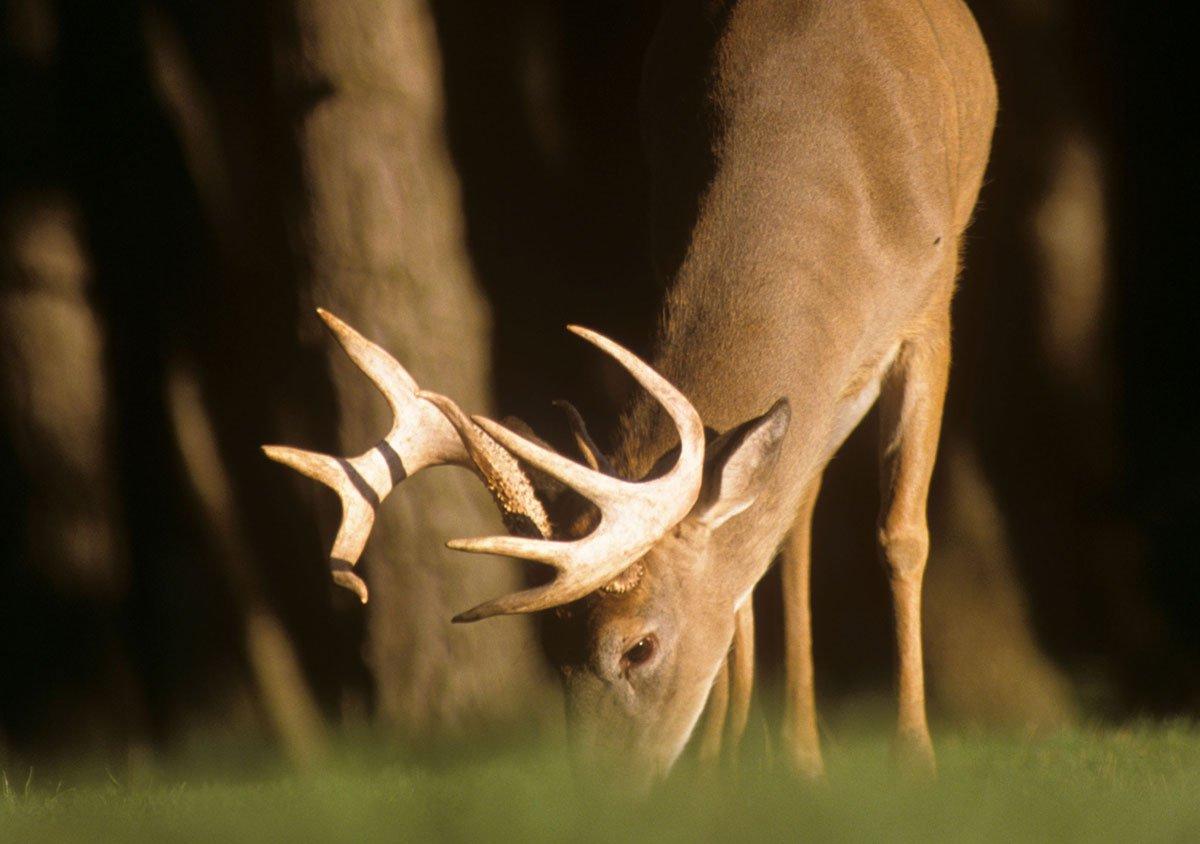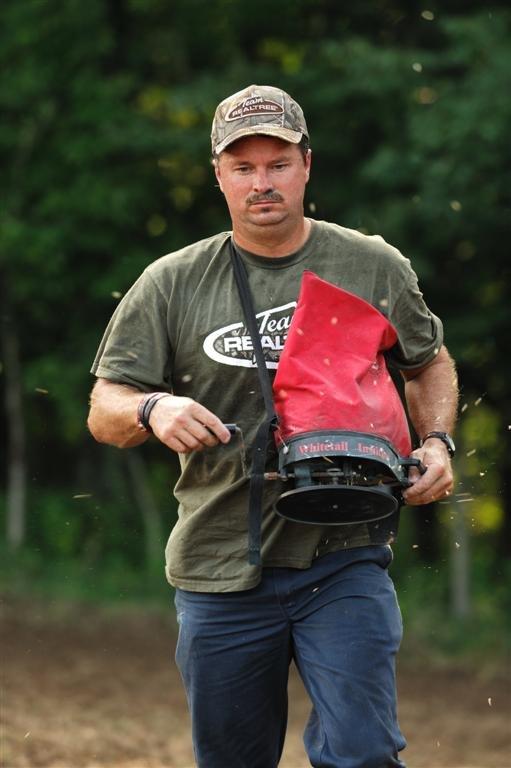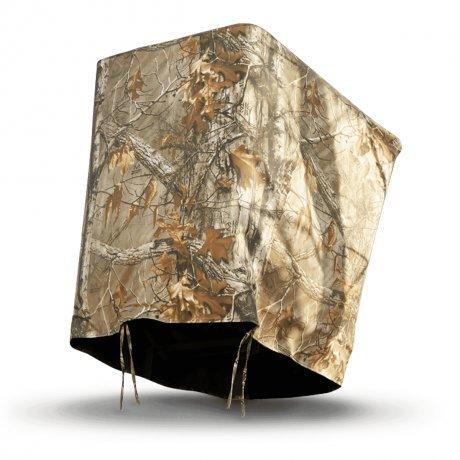Not Seeing the Lush, Green Plot You Want?
You've tilled. Planted. Fertilized.
Weeks later, that food plot is still as brown as a flooded river.
You scratch your head and hope things go a little better the next time around. But each time you try to plant a food plot, the results are the same. Plants don't grow ... and your money is wasted.
Maybe you're doing something wrong. Here are 10 of the most common mistakes -- and advice on fixing them from guys who know a thing or two about growing food plots. Listen up, and you should be seeing green in no time.
You Didn't Do a Soil Test
Tim Kent, who works for Evolved Harvest, says one of the primary reasons food plots fail to flourish is because a soil test wasn't done. A soil test in itself won't make your plot plants grow, but it will tell what they need to grow. Without good, balanced PH levels in soil, plants can't pull all the nutrients they need. A soil test will tell you how much (or little) lime and fertilizer is required for the plant you're planting, and whether or not your fertilizer needs more nitrogen, potash, etc. A soil test can even save you money in the long run. Most county extension offices and local grain elevators offer soil testing services for a nominal fee.
You Over-Seeded
The old saying that if a little is good then a lot is better isn't always true when discussing food plots.
There are recommended seeding rates per acre, regardless of what you're planting. These rates are usually printed on the side of the seed bag, and if they're not, the information is readily available online and from seed distributors. Many hunters use too much seed," Kent says. "When you do that, all that extra seed is competing for the nutrients in the soil, and none of the seed ends up getting the proper amount. As a result, the plot never really reaches its full potential.
Deer Are Overgrazing
Many people plant a food plot just right, but fail to put in a utilization cage. This is just a cage around a small area of the plot that prevents deer from getting to it, Kent says. It will let you know if your plot is being loved to death by the deer. If the plants are knee-high in the cage but ankle-high outside of it, the plot is being overgrazed.
A portable electric fence may need to be put up at certain times of the year when the plot is getting started. Another solution is to plant several plots that all mature at different rates so the deer aren't just hammering one plot. Some seed blends have a variety of plants in them that mature at different rates, which can also reduce this problem.
You Aren't Maintaining It
Steve Scott from Whitetail Institute knows a few things about clover plots, and he says the work is never done.
Just because a food plot like clover is a perennial doesn't mean you plant it and next year it doesn't need anything done to it, said Scott. A clover plot, or any perennial plot, will need to be mowed to cut back on the weeds and help the plants really take off again. Fertilizer will be needed again if you want a plot to grow to its maximum potential."
You Planted the Wrong Forage
Sometimes plots fail not because you've done something wrong in the planting process, but because you chose the wrong type of forage for your area. A big brassica plot, for example, is at its best after a hard freeze. So if you live down south, where a hard freeze isn't likely to happen until the end of deer season, it may be best to go with another forage choice.
We've had many droughts in recent years," Scott adds. "If you're in a drought-prone area, it is important to pick a drought-tolerant seed and plant it at the right time -- often early fall. Annuals like our Forage Oats can be planted in late summer and early fall (ideally just before a rain), and they grow fast. By doing that, you avoid the long, hot summer."
There's Not Enough Sun
Plants require sunglight to grow. Simple as that. Keep that in mind when planting your plots, particularly small, secluded plots. Some seed blends work better than others in areas of limited sun, but the easiest way to increase the sunlight exposure on any plot is with a chainsaw. Cut down large limbs, or even a few trees altogether, so that the sun reaches all parts of the plot for some portion of the day.
The Soil Bed Is Bad
Seed contact with the soil is essential for any food plot -- regardless of whether the seed bag says "no till" or not. "Just because a seed bag says no equipment is needed doesn't mean no soil prep is required," Scott says. "All good food plot sites need a lot of prep work. Even those that don't require a disk for breaking deep into the ground will still germinate better if the soil is worked thoroughly, even with a hand rake."
The Location Sucks
Planting issues aren't the only food plot problem people run into. Some folks put in a food plot without thinking about how easy the location will be to hunt.
Gear Review: Hunters Specialties Easy Fit Treestand Skirt in Realtree
Before I plant a food plot, I look at the lay of the land and think about where I am going to hang my treestand or put a ground blind, Kent says. "I want to be able to kill a deer in my plot and to do so, I often build my plots around a particular tree that is a perfect tree for hanging a stand.
Furthermore, that stand -- and your plot -- best be in an area that's accessible. Are your prevailing deer-season winds out of the northwest? Then planting a plot that's only huntable on a southeast wind is unwise. So is a plot that requires a walk through a known bedding area. You're a hunter. Use your head. Failure to plan is planning to fail.
You're Not Fertilizing
Constant maintenance -- and a regular dose of "plant food" -- are essential steps in the eyes of a serious gardener. A food plotter should have the same approach. Keith Garland, owner of NuPlot, says that any plot, regardless of what's planted, should be fertilized every 45 days once it's established and growing. "After a plot is fertilized, it really takes off and the deer quickly key in on that fresh growth," he says. "Regularly fertilizing a plot helps it reach its full potential and keeps it going over the long run. Many people only fertilize once immediately before planting, or just once a year, and that is a mistake."
It's the Wrong Size
Growing large food plots is expensive, and they can be hard to hunt. Bedroom-sized food plots often get quickly eaten so they don't hold deer during hunting season. The key to success is somewhere in the middle. Doug Benefield from Illinois Connection Outfitters in Pike County, Ill., plants a variety of medium-sized plots in lieu of a few big ones.
Hunters with a small piece of property would do best planting a few food plots that are a couple acres in size instead of one large plot," he says. "I would plant a couple plots that mature in the summer and early fall, and one that is mature in late fall and early winter. This ensures there is always something growing that deer want to eat. And that keeps them on your property."
Don't MIss: 5 Food Plots For Procrastinators
Editor's Note: This was originally published on May 16, 2014.
Are you a deer hunter wanting to learn how to accomplish your goals? Check out our stories, videos and hard-hitting how-to's on deer hunting.










